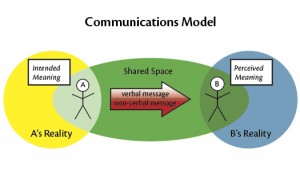Clear communication fosters good relations. The purpose of a contract between a consultant and client is setting the tone for their working relationship. A contract is more than a legal document. It is a contract of ethics and expectations for all parties. It is an outline of agreements made and intentions. It is like a pre-nuptial agreement for business relationships. A solid contract respects the needs and rights of all parties. It provides protection should any of those involved fail to fulfill their agreements. I like to think of a contract as a map of the essential and important aspects of an engagement. You may have noticed that the similarity in the words used to describe a romantic contract (engagement, nuptials, pre-nuptials, honeymoon, breach of contract, commitment) and a business contract (engagement, agreements, honeymoon, breach of contract, commitment). At the start of your relationship, you may not envision problems that may arise, thinking that what you want and what your clients want are in alignment. That may be true, yet the road to clear communication is not always as transparent as we think it is.
Each of us comes to the table with our own view or perception of the world. We all have unique experiences and therefore goggles that color what we see and hear. This unique map is built upon our perceptions. While we may believe that we have been clear in our attempts to communicate with others, unless we understand the filter or map we bring with us and the map of those we wish to communicate with, our communication can fail. As you can see in the model below, there are layers of messaging, perceptions and intentions.
Fortunately, there is shared space where the sender and receiver have common understanding. It is in this space where a well written contract can exist.
What goes into a clear contract?
The scope of the engagement
- how much
- how long
- metrics
- milestones
The expectations of each party
- The process for making requests for changes to the original scope of work (change orders)
- Rights and responsibilities of the client and the consultant
- Who has authority to make decisions
- How you will communicate
- What it will cost
- What resources are available
- What resources need to be brought in
- How payment will be made
- How to end the contract in the event that circumstances change
- What it looks like when the terms of the contract have not be honored by either party
- What it looks like when all the terms have been honored
Best Business Practices
A contract is a summary of what you and your client have agreed to. It doesn’t have to be long. It needs to state what you both understand and will do you best to honor. I draft my contracts based on conversations with my clients. We work out the details together. It is an excellent opportunity to deepen our relationship and avoid misunderstandings. Skip any of these steps at your own peril. Take time to work out the details collaboratively with your clients before you start a project and you will have a strong foundation for success.










You must log in to post a comment.